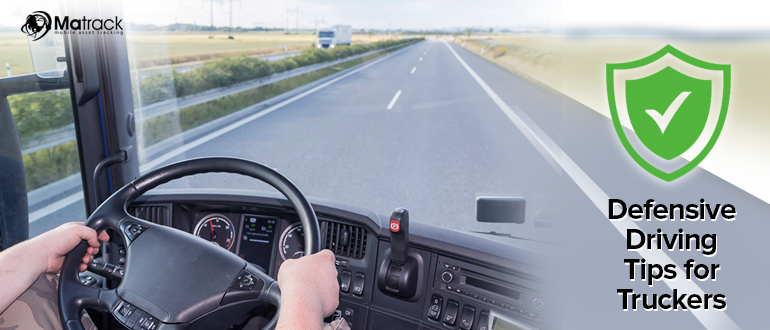Key Takeaways:
- Defensive driving is a proactive driving approach that focuses on accident prevention and risk reduction.
- It involves staying alert, anticipating hazards, maintaining safe distances, and adapting to road conditions.
- Practicing defensive driving improves road safety, lowers accident risks, and can reduce insurance costs.
- Becoming a skilled defensive driver requires awareness, adherence to traffic laws, and vehicle maintenance.
What Does Defensive Driving Mean?
Defensive driving is a set of skills and techniques that drivers use to minimize risks, prevent accidents, and handle potentially dangerous situations effectively. It emphasizes staying alert, maintaining a safe distance, and adapting to unexpected conditions on the road.
Unlike regular driving, where a person simply follows traffic laws, defensive drivers actively anticipate dangers, whether from other vehicles, pedestrians, road conditions, or weather changes. The main goal is to reduce the likelihood of collisions and keep yourself and others safe.
Importance of Defensive Driving
- Reduces the Risk of Accidents: Defensive driving helps identify potential dangers early, allowing drivers to take preventive actions before a situation becomes dangerous.
- Lowers Insurance Costs: Many insurance companies offer discounts for completing defensive driving courses since safe drivers file fewer claims.
- Improves Fuel Efficiency: Smooth acceleration, controlled braking, and maintaining a consistent speed—all part of defensive driving—help reduce fuel consumption.
- Promotes Safer Roads: When more drivers practice defensive driving, it leads to fewer accidents and smoother traffic flow.
- Enhances Driving Confidence: Defensive drivers feel more in control, knowing they have the skills to handle unexpected road situations safely.
What Are the Basic Principles of Defensive Driving?
To practice defensive driving effectively, it’s essential to understand its core principles:
Stay Alert and Avoid Distractions
A defensive driver is always aware of their surroundings. This means keeping eyes on the road, checking mirrors frequently, and avoiding distractions such as:
- Texting or using a phone
- Eating or drinking while driving
- Adjusting the radio or GPS while in motion
- Engaging in intense conversations that divert attention
Follow the Three-Second Rule
Maintaining a safe following distance is one of the most important defensive driving techniques. The three-second rule ensures there is enough space between your car and the vehicle ahead. Here’s how it works:
- Pick a stationary object (like a road sign or tree).
- When the car in front of you passes the object, start counting: One thousand one, one thousand two, one thousand three.
- If you reach the object before finishing the count, you’re too close—slow down.
In adverse weather conditions like rain, fog, or snow, increase the following distance to five or six seconds for extra safety.
Anticipate the Actions of Other Drivers
Defensive drivers never assume that other drivers will follow traffic laws or behave predictably. Always be prepared for:
- Cars suddenly braking or changing lanes.
- Drivers running red lights or stop signs.
- Pedestrians or cyclists entering the road unexpectedly.
Anticipating potential hazards allows you to react in time and avoid collisions.
Control Your Speed
Speeding reduces reaction time and increases the severity of accidents. Defensive drivers always:
- Adjust their speed according to road and weather conditions.
- Follow posted speed limits and slow down in school zones or residential areas.
- Keep a safe speed when merging or exiting highways.
Avoid Aggressive Driving
Aggressive driving behaviors like tailgating, road rage, excessive honking, and weaving between lanes create unnecessary risks. Stay calm, patient, and focused on safety rather than competing with other drivers.
Use Defensive Parking Strategies
Defensive driving isn’t just about moving vehicles—it also applies to parking. Here are some defensive parking tips:
- Park in well-lit areas to deter theft or vandalism.
- Reverse into parking spaces when possible, as it provides a clearer view when exiting.
- Check your surroundings before opening your door to avoid hitting cyclists or pedestrians.
Adapt to Weather and Road Conditions
Different road conditions require different defensive driving techniques:
- Rain and Wet Roads: Reduce speed, turn on headlights, and avoid sudden braking.
- Snow and Ice: Use gentle acceleration and braking, and maintain extra distance from other vehicles.
- Fog: Keep low-beam headlights on and use fog lights if available.
- Night Driving: Increase alertness, reduce speed, and avoid looking directly at oncoming headlights.
Always Wear a Seatbelt
Seatbelts save lives. Defensive drivers make it a habit to wear a seatbelt at all times and ensure all passengers do the same.
How Does One Become a Good Defensive Driver?
Becoming a defensive driver takes practice, awareness, and commitment. Here are some actionable steps:
Take a Defensive Driving Course
Many states and insurance companies offer certified defensive driving courses. These courses cover advanced driving techniques and sometimes provide benefits like insurance discounts or point reduction on driving records.
Practice Defensive Driving Daily
Incorporate defensive driving habits into your everyday routine. Over time, these habits become second nature, improving your overall safety on the road.
Stay Updated on Traffic Laws
Laws change, and staying informed about updated traffic regulations ensures compliance and safety.
Keep Your Vehicle in Good Condition
Regular vehicle maintenance prevents mechanical failures that could lead to accidents. Check brakes, tires, lights, and fluids frequently.
Be Prepared for Emergencies
Keep an emergency kit in your car, including:
- First-aid supplies
- Flashlight and batteries
- Jumper cables
- Water and non-perishable snacks
- A tire repair kit and spare tire
Conclusion
Defensive driving is more than just a skill, it’s a mindset that prioritizes safety, awareness, and preparedness. By practicing defensive driving techniques, you protect yourself, your passengers, and other road users from preventable accidents.
Every time you get behind the wheel, remember: a defensive driver is a safe driver. Stay alert, anticipate hazards, and always drive with caution. The road is unpredictable, but with defensive driving, you can significantly reduce risks and make driving a safer experience for everyone.



